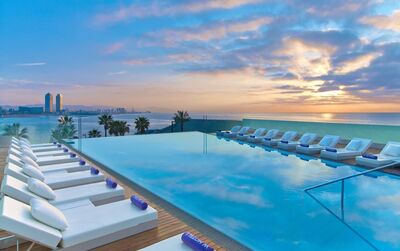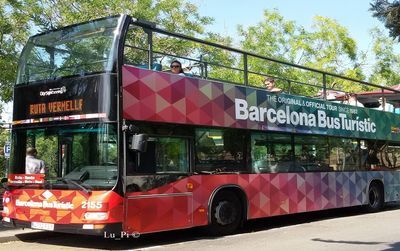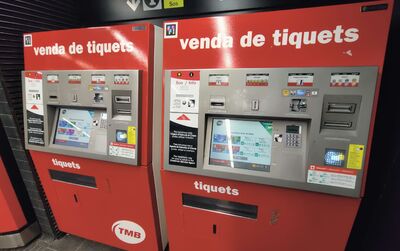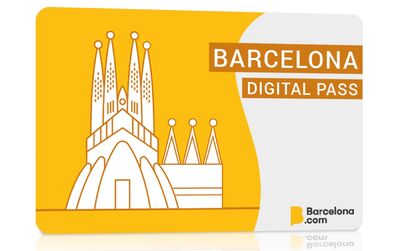Culture in Barcelona
A museum, treasure of the Romanesque painting
The carved decoration in the Romanesque cathedral of the XI century, the Gothic retable carried out in the XV century by Jaume Huget for the churches Sant Agusti Vell, Sant Vicens de Sarria and Santa Maria del Pi, as well as The Virgin of the Advisors painted by Lluís Dalmau for the chapel L'Ajument, without forgetting the paintings of Lluís Borrassà and Bernat Martorell for the cathedral are today exposed in the Museu Nacional d'art de Catalunya (NMAC) in a unique Romanesque and Gothic paintings collection in Europe.
Barcelona Bohemian Els 4 Gats
In 1897 a figure about-town called Pere Romeu opened this cafe in a Modernista building by Puig i Cadafalch, and for the next few years it was the great meeting-point of bohemian Barcelona. Major Modernista artist such as Rusinol and Casas painted pictures especially for it, and menu illustration was Picasso's first paid commission. It is an attractive place for a coffee. In the room at the back, where Pere Romeu presented avant-garde performances, is the restaurant, which has the attraction of the full menu being available throughout opening times.
Three masters : Pablo Picasso, Joan Miró, Antoni Tapies
From his adolescence passed in Barcelona (1895-1900), Pablo Picasso (1881- 1973)
Has its initial education in the fine arts (Llotja) and Els 4 Gats, and the Modernism. After a trip and an individual exposition in Paris, he develops its own stile : the blue period. It marked the end of Picasso's juvenilia and the beginning of his professional career as an artist. In 1907 he paints Les Demoiselles D'Avignon.
He was the artist with whom virtually every other artist had to reckon, and there was scarcely a 20th century movement that he didn't inspire, contribute to or--in the case of Cubism, which, in one of art history's great collaborations, he co-invented with Georges Braque--beget. The exception, since Picasso never painted an abstract picture in his life, was abstract art; but even there his handprints lay everywhere--one obvious example being his effect on the early work of American Abstract Expressionist painters, Arshile Gorky, Jackson Pollock and Willem de Kooning, among others.
Today you can visit the Picasso Museum in Barcelona.
He was never a member of the Surrealist group, but in the 1920s and '30s he produced some of the scariest distortions of the human body and the most violently irrational, erotic images of Eros and Thanatos ever committed to canvas. He was not a realist painter/reporter, still less anyone's official muralist, and yet Guernica remains the most powerful political image in modern art, rivaled only by some of the Mexican work of Diego Rivera.
Joan Miró Ferra was born April 20, 1893, in Barcelona. At the age of 14, he went to business school in Barcelona and also attended La Lonja's Escuela Superior de Artes Industriales y Bellas Artes in the same city.
In 1920, Miró made his first trip to Paris, where he met Pablo Picasso. From this time, Miró divided his time between Paris and Montroig, Spain. In 1924, Miró joined the Surrealist group. His solo show at the Galerie Pierre, Paris, in 1925 was a major Surrealist event; Miró was included in the first Surrealist exhibition at the Galerie Pierre that same year.
In 1929, he started his experiments in lithography, and his first etchings date from 1933. During the early 1930s, he made Surrealist sculptures incorporating painted stones and found objects. In 1936, Miró left Spain because of the civil war; he returned in 1941. Also in 1936, Miró was included in the exhibitions Cubism and Abstract Art and Fantastic Art, Dada, Surrealism at the Museum of Modern Art, New York. The following year, he was commissioned to create a monumental work for the Paris World' Fair.
You can visit the Joan Miro foundation in Barcelona.
Antoni Tàpies was born on Dec. 13, 1923 in Barcelona.
From his Surrealist beginnings, he moved on to become an advocate of Informal Art, Conceptual Art and Arte Povera. Tàpies works in his own unmistakable artistic language: his paintings consist of signs and traces, of evidence, reduction and assemblage.
Printing became an important medium for him. The elementary forms of his paintings appeared in his lithographs as well as in his etchings, the dark grounds, impressions, traces, but also classical signs, numbers and letters. Tàpies wholly committed himself through his work for the freedom of artistic expression as well as of Catalonia and its culture.
His essays in biography and art criticism are excellent reflections of Tàpies' spiritual stance. They constitute one of the most distinctive collections of writings on art of our times and at the same time reflect the core of Catalan spiritual life (cf. Editions Erker Verlag, St. Gallen). Exhibits throughout the world, honors and awards acknowledge his work. In 1987, the artist founds the Fundació Antoni Tàpies in Barcelona, with its spacious museum and its East Asian Library.
Today you can visit in Barcelona the Antoni Tàpies Foundation




3 comments
museums - kike (25 Jul 2012 - 19:30)
hello,
I have a question, there aren't a archeological museum in the city? im' very interested in this area.
thanks a lot
Barcelona - Mataro (26 Sep 2011 - 12:15)
Nice website!
There s much good information cause i m gonna move to Barcelona!
MEAM - leon (13 Jul 2011 - 23:15)
Hello,
I've heard that there is a new museum recently opened in Barcelona on Figurative Modern Art...Could you publish some information?
thanks